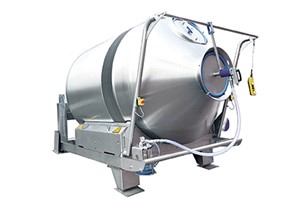Cashews are certainly unusual nuts. A raw cashew nut cannot be eaten immediately after being harvested because it is poisonous. It first has to be heat-treated. It has a delicate flavor with a slightly spongy-firm texture to boot.
Cashews are one nut that people with food intolerance can eat without worry. This is because they have low levels of natural food chemicals. But there are few people who can suffer an allergic reaction after eating cashew nuts.
Once raw cashew nuts are processed, they are developed into a variety of products. Such products are raw, roasted, snacks (salted, unsalted, sweetened), nut spreads, milk, nut drinks. People who buy raw cashew nuts at a food market or retail outlet tend to look for plump and meaty ones.
Harvesting of Cashew Nuts in Tanzania
Cashew season in Tanzania runs from October till December. Harvesting can start about 2-3 months after the fruit has set. The time for fruit maturity depends on the variety, the health of the tree and the climate conditions during fruit growth.
Cashew nuts harvesting is labor intensive. Twisting the nut off the apple is the most laborious part as it is done by hand. Here are four ways cashew nuts are harvested:
- Thrashing by stick and then collection
- Climbing the tree, thrashing and then collection
- Shaking the branches
- Collection after natural drop
The first three methods result in a large percentage of immature nuts. This leads to inferior quality of the final product. The effect of these methods is a reduction in production because young flowers drop in the process.
The higher the number of immature nuts harvested, the higher the loss for a cashew farmer in Tanzania. This is why there is a test to find out the maturity of the nut. Mature nuts sink in water while immature ones float.
The last method is the best one because it results in mature nuts. Cashew apples fall to the ground when they are fully ripe. A limited number of cashews fall at the beginning of the season but its picks up and then production slows down.
Once harvesting is done, the nuts are separated from the apples. Cashew nuts are stored and taken out to dry in the sun for 2-3 days to reduce moisture to 9% or below. Proper drying prolongs their storage life.
Sun drying of cashew nuts can be done on specially prepared drying floors or mats made of bamboo or palm leaves. The drying floor is semi-finished, rough and slightly sloping so as to allow rainwater to run off. The cashew-nut layer on the drying floor is not thicker than 10cm which allows for about 60kg of nuts per square meter.
The nuts are constantly raked to ensure that they are all dried evenly. Afterwards, the nuts are heaped together and covered in the evenings. The nuts are checked the following morning to assess the need for further drying. Dried nuts should make a rattling sound when falling.
Cashew Nut Storage
In Tanzania, cashew nuts are stored in a warehouse/godown. A well-maintained warehouse keeps the nuts from decreasing in quality. Inside the godown, cashew nuts are stored in gunny bags. They can be stored for up to six months after harvesting.
Here are the requirements for a warehouse to store cashew nuts:
- A dry, waterproof floor
- A secure roof to prevent rain
- Firm walls to prevent water from entering the warehouse
- Adequate headroom to allow bags to be stacked
- Spacious to allow easy inspection of bags and enough space between the wall and the stacks and even in between the stacks
- Every stack should be put on a raised wooden platform to prevent moisture from being drawn from the floor to the nuts
- Properly ventilated
Tanzania Cashew
Currently, Tanzania processes only a small percentage of cashew nuts it produces. There are about 20 cashew nut processing factories in the country but less than 10 are operational. Most of these factories are small and medium scale processors involved largely in cashew nut peeling.
Tanzania exports a big percentage of its cashew nuts to India and Vietnam for processing. Later, they are re-exported to the United States (US) and countries in Europe and Asia. The East African nation aims to process more cashew nuts in the coming years in order to gain in sales.
As of 2020, around 800,000 hectares in Tanzania were planted with cashew trees. This is according to the 2019/20 National Sample Census of Agriculture by the National Bureau of Statistics (NBS). The report says the country produced almost 400,000 tons of cashew nuts during that year. Out of this number, only 700 tons were produced by large scale farmers and the rest by smallholder farmers.
Mtwara region is the hub of cashew nut production in Tanzania. It is a coastal area located in the southern part of the country. It produced about 200,000 tons in 2020 according to NBS which accounts for about 43% of the national production.
The other regions in Tanzania under cashew nut cultivation are:
- Lindi
- Ruvuma
- Pwani
- Dar es Salaam
- Tanga
- Iringa
- Njombe
General rules set by the Cashew nut Board of Tanzania (CBT) for sales of raw cashew nuts are:
- A bidder must have a raw cashew nut (RCN) buying license from CBT for the current season
- The sale of RCN is done through auctions where buyers will submit their offers in sealed envelopes on the basis of one bidder, one bid for each warehouse
- Each bidder submits their bid in the tender box which is opened on the auction day.
- Highest bidder(s) is announced at the auction site after farmers agree to sell
- The minimum bidding quantity is 50 tons except for local processors
- The licensed buyer is given the sales catalogue 12 hours before auction













